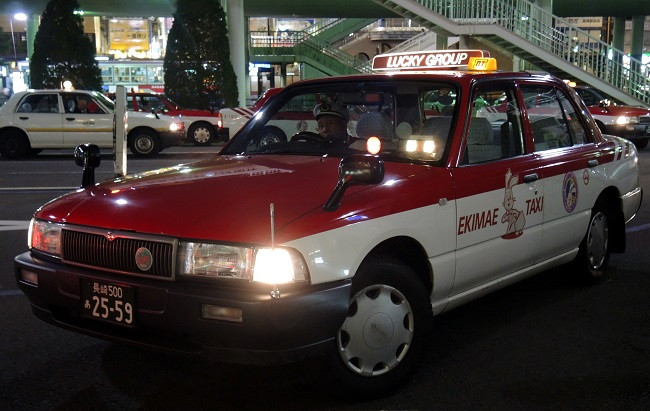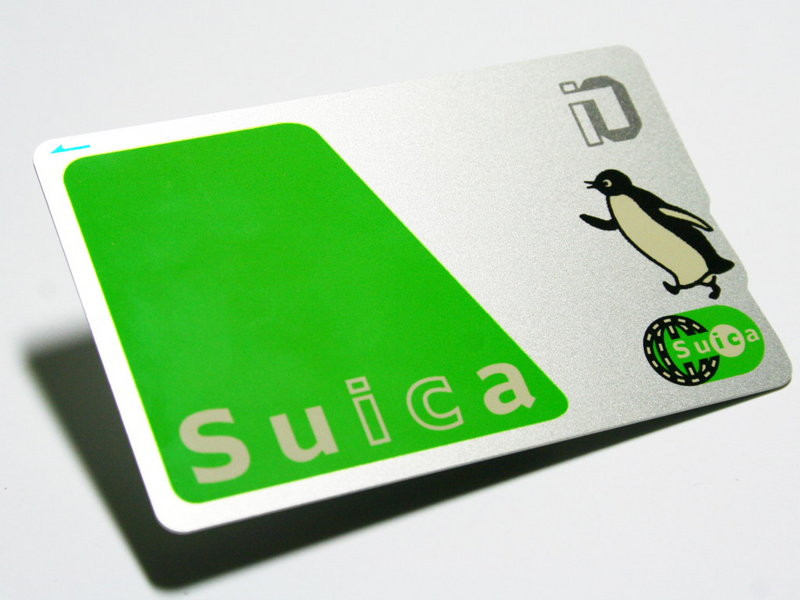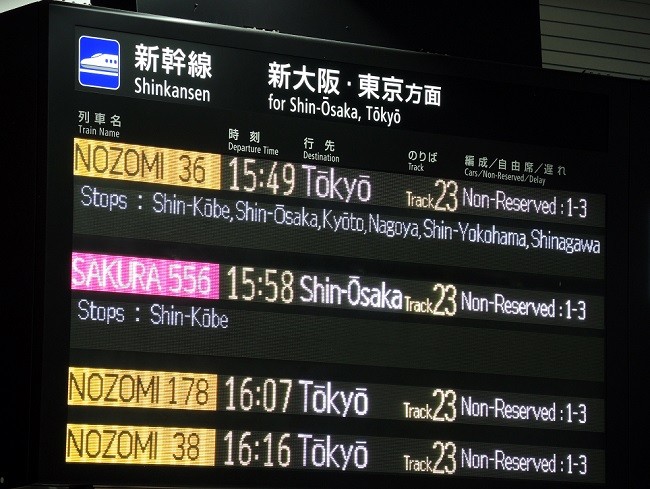Traveling to Japan is a dream for many, and at SIXT.VN, we believe language shouldn’t be a barrier to experiencing its wonders. Yes, you absolutely can travel Japan without knowing Japanese! This guide provides practical tips and resources to navigate Japan confidently, even if you don’t speak the language. From efficient transportation to helpful services, we’ll show you how to make your Japanese adventure seamless and unforgettable. Let’s explore how to plan your Japan trip focusing on accessible travel options, essential phrases, and leveraging technology for a smooth journey.
1. Understanding Your Travel Aspirations in Japan
What does your dream trip to Japan look like? Defining your travel style helps tailor your experience and overcome language barriers.
1.1. Identifying Your Japan Travel Style
Understanding your travel style is the first step in planning a smooth and enjoyable trip to Japan, even without knowing Japanese.
-
Adventurous Explorer: Do you crave off-the-beaten-path experiences, immersing yourself in local culture, and discovering hidden gems?
-
Relaxing Vacationer: Are you looking for a leisurely pace, comfortable accommodations, and a focus on relaxation and rejuvenation?
-
Budget Traveler: Are you mindful of your spending, seeking affordable options, and prioritizing value for money?
-
Luxury Seeker: Do you desire high-end experiences, luxurious accommodations, and exclusive services?
-
Solo Traveler: Are you embarking on a personal journey of self-discovery, enjoying the freedom and flexibility of independent travel?
-
Family Traveler: Are you traveling with children, prioritizing family-friendly activities, and ensuring the comfort and safety of your loved ones?
Once you understand your travel style, you can make informed decisions about transportation, accommodation, activities, and communication strategies that minimize the impact of the language barrier.
1.2. Defining Your Japan Travel Goals
What do you want to achieve during your Japan trip? Having clear objectives will shape your itinerary and influence your communication needs.
-
Cultural Immersion: Exploring traditional arts, attending festivals, and engaging with local customs.
-
Culinary Delights: Trying authentic Japanese cuisine, from street food to fine dining.
-
Historical Exploration: Visiting ancient temples, castles, and historical sites.
-
Natural Beauty: Discovering scenic landscapes, hiking trails, and serene gardens.
-
Urban Adventure: Exploring bustling cities, experiencing modern technology, and enjoying vibrant nightlife.
-
Spiritual Retreat: Visiting sacred sites, practicing meditation, and finding inner peace.
By identifying your travel goals, you can prioritize key destinations and experiences, and focus on learning relevant phrases or using translation tools that will enhance your interactions with locals.
2. Overcoming the Language Barrier: Practical Communication Tips
Navigating Japan without Japanese is easier than you think with these communication strategies.
2.1. Mastering Essential Japanese Phrases
Learning basic Japanese phrases can significantly enhance your travel experience and show respect for the local culture. Here are some essential phrases to get you started:
| Phrase | Pronunciation | Meaning | Usage |
|---|---|---|---|
| こんにちは (Konnichiwa) | Kon-nee-chee-wah | Hello | A general greeting suitable for most situations. |
| ありがとう (Arigato) | Ah-ree-gah-toh | Thank you | Expressing gratitude for services, assistance, or gifts. |
| すみません (Sumimasen) | Soo-mee-mah-sen | Excuse me/Sorry | Getting attention, apologizing for a minor inconvenience, or expressing sympathy. |
| はい (Hai) | High | Yes | Affirmative response. |
| いいえ (Iie) | Eee-eh | No | Negative response. |
| お願いします (Onegaishimasu) | Oh-neh-guy-shee-masu | Please | Making a request or asking for assistance. |
| ~はどこですか?(~ wa doko desu ka?) | ~ wah doko desu ka? | Where is ~? | Asking for directions to a specific place. |
| いくらですか?(Ikura desu ka?) | Ee-koo-rah desu ka? | How much is it? | Inquiring about the price of an item or service. |
| 分かりません (Wakarimasen) | Wah-kah-ree-mah-sen | I don’t understand | Indicating that you don’t understand what someone is saying. |
| 英語を話せますか?(Eigo o hanasemasu ka?) | Ay-go oh hah-nah-seh-masu ka? | Do you speak English? | Asking if someone speaks English. |
| お手洗いどこですか?(Otearai wa doko desu ka?) | Oh-teh-ah-rye wah doko desu ka? | Where is the restroom? | Asking for the location of the restroom. |
| 助けてください (Tasuke te kudasai) | Tah-soo-keh teh koo-dah-sye | Help me | Asking for help in an emergency. |
| メニューお願いします (Menyū onegaishimasu) | Men-you oh-neh-guy-shee-masu | Menu, please | Asking for the menu in a restaurant. |
According to research from the Japan National Tourism Organization (JNTO), in 2023, speaking even a few basic Japanese phrases significantly enhances interactions with locals, fostering a more positive and welcoming experience.
2.2. Leveraging Translation Apps and Devices
Translation apps and devices are invaluable tools for bridging the language gap in Japan. Some popular options include:
- Google Translate: Offers real-time translation of text, speech, and images.
- iTranslate: Provides accurate translations in multiple languages, with offline support.
- Pocketalk: A dedicated translation device with advanced speech recognition and translation capabilities.
Using translation apps can empower you to:
- Communicate with locals in various situations, such as ordering food, asking for directions, or making purchases.
- Translate signs, menus, and other written materials.
- Learn new Japanese words and phrases.
When using translation apps, remember to:
- Speak clearly and concisely.
- Use simple sentences.
- Double-check the accuracy of the translation.
- Be mindful of cultural nuances and avoid slang or idioms.
2.3. Utilizing Visual Communication
Visual communication can be highly effective in conveying your message, especially when verbal communication is limited.
- Pointing and Gesturing: Use gestures and body language to indicate what you want or need.
- Drawing and Sketching: Draw simple pictures to illustrate your requests or questions.
- Using Photos: Show photos of destinations, food items, or services to help locals understand your needs.
- Writing: Write down key words or phrases in English or Japanese to aid communication.
Remember that non-verbal cues can vary across cultures. Be mindful of Japanese customs and etiquette when using visual communication.
2.4. Seeking Assistance from English-Speaking Staff
Many tourist destinations, hotels, and transportation hubs in Japan have English-speaking staff who can provide assistance.
- Tourist Information Centers: These centers offer a wealth of information, including maps, brochures, and advice from knowledgeable staff.
- Hotel Concierges: Hotel concierges can assist with booking tours, making restaurant reservations, and providing local recommendations.
- Train Station Staff: Train station staff can help with purchasing tickets, navigating train schedules, and providing directions.
- Airport Staff: Airport staff can assist with immigration procedures, baggage claim, and transportation options.
Don’t hesitate to ask for help from English-speaking staff when you need assistance. They are there to ensure that your travel experience is smooth and enjoyable.
3. Navigating Japan: Transportation Without the Japanese Language
Japan’s transportation system is efficient and accessible, even without knowing Japanese.
3.1. Mastering Japan’s Efficient Public Transportation
Japan’s public transportation system is renowned for its efficiency, punctuality, and extensive coverage. With some planning and preparation, you can navigate it with ease, even without speaking Japanese.
-
Trains: Japan’s train network is the backbone of its transportation system, connecting major cities and regional areas.
- Shinkansen (Bullet Trains): High-speed trains that connect major cities, offering a comfortable and efficient way to travel long distances.
- JR (Japan Railways) Lines: A network of local and regional trains that cover a wide range of destinations.
- Subways: Underground train systems that operate in major cities, providing a convenient way to travel within the urban core.
-
Buses: Buses provide access to areas not served by trains, offering a scenic way to explore the countryside.
-
Ferries: Ferries connect islands and coastal cities, providing a unique travel experience.
To navigate Japan’s public transportation system, consider the following tips:
- Plan Your Route in Advance: Use online resources like Google Maps or Japan Transit Planner to plan your route and identify transfer points.
- Purchase a Japan Rail Pass: If you plan to travel extensively by train, a Japan Rail Pass can save you money and provide unlimited access to JR trains.
- Use a Suica or Pasmo Card: These rechargeable cards can be used on most trains and buses in major cities, eliminating the need to purchase individual tickets.
- Pay Attention to Signage: Most train stations and transportation hubs have signs in English, providing clear directions and information.
- Ask for Assistance: Don’t hesitate to ask for help from station staff or fellow passengers if you need assistance.
3.2. Utilizing Airport Transfer Services
Airport transfer services provide a convenient and stress-free way to get from the airport to your hotel or other destination.
- Airport Limousine Buses: These buses offer direct service from the airport to major hotels and transportation hubs in Tokyo and other cities.
- Private Airport Transfers: Pre-booked private transfers provide door-to-door service, offering a comfortable and personalized experience.
- Taxi Services: Taxis are readily available at airports, but can be more expensive than other options.
When booking airport transfer services, consider the following factors:
- Cost: Compare prices from different providers to find the best deal.
- Convenience: Choose a service that offers direct service to your destination.
- Reliability: Read reviews and check the reputation of the service provider.
- Language Support: Confirm that the service provider offers English-speaking staff or drivers.
3.3. Renting Pocket Wi-Fi or Using SIM Cards
Staying connected is essential for navigating Japan without Japanese. Renting a pocket Wi-Fi device or using a SIM card allows you to access online resources, translation apps, and maps.
- Pocket Wi-Fi: A portable Wi-Fi router that provides internet access for multiple devices.
- SIM Card: A prepaid SIM card that allows you to use your smartphone for internet access and phone calls.
When choosing between pocket Wi-Fi and SIM cards, consider the following factors:
- Data Usage: Estimate your data usage based on your planned activities.
- Cost: Compare prices from different providers to find the best deal.
- Coverage: Check the coverage area of the provider to ensure reliable internet access.
- Convenience: Consider the ease of setup and use.
3.4. Relying on Taxis and Ride-Sharing Apps
Taxis and ride-sharing apps can provide a convenient way to travel within cities, especially when public transportation is limited or inconvenient.
- Taxis: Taxis are readily available in most cities, but can be expensive.
- Ride-Sharing Apps: Ride-sharing apps like Uber are available in some cities, but may not be as widespread as in other countries.
When using taxis or ride-sharing apps, consider the following tips:
- Have Your Destination Written Down: Show the driver your destination in Japanese to avoid confusion.
- Use a Translation App: Use a translation app to communicate with the driver if necessary.
- Be Aware of Surge Pricing: Ride-sharing apps may charge higher prices during peak hours.
- Confirm the Fare: Ask the driver to confirm the fare before starting the ride.
 Taxi drivers rarely speak English so have your destination written down in Japanese if possible
Taxi drivers rarely speak English so have your destination written down in Japanese if possible
4. Accommodation and Dining: Enjoying Comfort Without the Language
Enjoying a comfortable stay and delicious meals is part of the Japan experience.
4.1. Booking Accommodation with English-Speaking Staff
When booking accommodation, prioritize hotels or guesthouses with English-speaking staff. This will make it easier to communicate your needs and preferences, and ensure a smooth and comfortable stay.
- Check Online Reviews: Read online reviews to see if other travelers have mentioned the availability of English-speaking staff.
- Contact the Hotel Directly: Call or email the hotel to inquire about their language capabilities.
- Look for English-Language Websites: Choose hotels that have websites in English, as this indicates a commitment to serving international guests.
- Consider International Hotel Chains: International hotel chains often have staff who are fluent in English and other languages.
4.2. Utilizing Hotel Concierge Services
Hotel concierges can provide valuable assistance with booking tours, making restaurant reservations, and providing local recommendations. They can also help with transportation arrangements and other travel-related needs.
- Ask for Recommendations: Ask the concierge for recommendations on local restaurants, attractions, and activities.
- Book Tours and Activities: The concierge can help you book tours and activities that are suitable for your interests and language capabilities.
- Make Restaurant Reservations: The concierge can make restaurant reservations for you, ensuring that you have a table at your desired time.
- Arrange Transportation: The concierge can help you arrange transportation to and from the airport, train station, or other destinations.
4.3. Ordering Food with Picture Menus and Pointing
Ordering food in Japan can be a delightful experience, even if you don’t speak Japanese.
- Look for Picture Menus: Many restaurants have picture menus that allow you to see what the dishes look like before ordering.
- Point at What You Want: Simply point at the dishes you want to order.
- Use Translation Apps: Use a translation app to translate the menu or ask the staff for recommendations.
- Try Izakayas: Izakayas (Japanese pubs) often have a wide variety of small dishes that are perfect for sampling.
Remember to be polite and respectful when ordering food in Japan. Say “Sumimasen” to get the staff’s attention and “Arigato” to thank them for their service.
4.4. Exploring Convenience Stores for Easy Meals
Convenience stores (konbini) are ubiquitous in Japan, offering a wide variety of ready-to-eat meals, snacks, and drinks. They are a great option for quick and affordable meals, especially when you are on the go.
- Ready-to-Eat Meals: Convenience stores offer a variety of ready-to-eat meals, such as rice balls (onigiri), bento boxes, and sandwiches.
- Snacks and Drinks: You can find a wide variety of snacks and drinks at convenience stores, including Japanese sweets, chips, and soft drinks.
- Hot Food: Many convenience stores offer hot food items, such as oden (a type of Japanese stew) and fried chicken.
- ATM Services: Convenience stores often have ATMs that accept international credit and debit cards.
 Suica card The Real Japan Rob Dyer
Suica card The Real Japan Rob Dyer
5. Maximizing Your Japan Experience: Cultural Immersion and Activities
Immerse yourself in Japanese culture with these accessible activities.
5.1. Visiting Tourist Information Centers
Tourist information centers are a valuable resource for travelers in Japan. They provide a wealth of information, including maps, brochures, and advice from knowledgeable staff.
- Get Maps and Brochures: Tourist information centers offer maps and brochures in English and other languages.
- Ask for Recommendations: Ask the staff for recommendations on local attractions, activities, and restaurants.
- Book Tours and Activities: The staff can help you book tours and activities that are suitable for your interests and language capabilities.
- Get Transportation Advice: The staff can provide advice on transportation options and help you plan your route.
5.2. Joining Guided Tours in English
Joining guided tours in English is a great way to learn about Japanese culture and history, and to see the sights with a knowledgeable guide.
- Look for English-Language Tours: Many tour operators offer tours in English.
- Book in Advance: Book your tours in advance, especially during peak season.
- Check the Itinerary: Make sure the itinerary includes the sights and activities that you are interested in.
- Read Reviews: Read online reviews to see what other travelers have said about the tour.
5.3. Attending Cultural Events and Festivals
Attending cultural events and festivals is a great way to experience Japanese culture firsthand.
- Check the Calendar: Check the local events calendar to see what festivals and events are happening during your visit.
- Learn About the Event: Learn about the event in advance so you know what to expect.
- Be Respectful: Be respectful of Japanese customs and traditions.
- Enjoy the Atmosphere: Immerse yourself in the atmosphere and enjoy the experience.
5.4. Exploring Temples, Shrines and Gardens
Temples, shrines, and gardens are an integral part of Japanese culture and history.
- Visit Popular Sites: Visit popular temples, shrines, and gardens, such as the Kiyomizu-dera Temple in Kyoto, the Meiji Jingu Shrine in Tokyo, and the Kenrokuen Garden in Kanazawa.
- Learn About the History: Learn about the history and significance of these sites before you visit.
- Be Respectful: Be respectful of the sacred nature of these places.
- Enjoy the Scenery: Take your time to enjoy the beauty and tranquility of these sites.
 How to travel in Japan The Real Japan Rob Dyer
How to travel in Japan The Real Japan Rob Dyer
6. Essential Tools for Your Japan Trip
Prepare for your trip with these essential tools.
6.1. Travel Insurance
Travel insurance is essential for any trip, especially to a foreign country. It can protect you from unexpected events, such as medical emergencies, trip cancellations, and lost luggage.
- Medical Coverage: Make sure your travel insurance includes medical coverage for any injuries or illnesses that you may experience during your trip.
- Trip Cancellation Coverage: Make sure your travel insurance includes trip cancellation coverage in case you need to cancel your trip due to unforeseen circumstances.
- Lost Luggage Coverage: Make sure your travel insurance includes lost luggage coverage in case your luggage is lost or damaged during your trip.
6.2. Power Adapter
Japan uses a different electrical voltage and plug type than many other countries. You will need a power adapter to charge your electronic devices.
- Voltage: Japan uses 100 volts, which is different from the 110-120 volts used in North America and the 220-240 volts used in Europe.
- Plug Type: Japan uses a Type A and Type B plug, which are different from the plugs used in many other countries.
6.3. Comfortable Walking Shoes
You will be doing a lot of walking in Japan, so comfortable walking shoes are essential.
- Choose Supportive Shoes: Choose shoes that provide good support for your feet and ankles.
- Break Them In: Break in your shoes before your trip to avoid blisters.
- Bring Extra Socks: Bring extra socks to keep your feet dry and comfortable.
6.4. First-Aid Kit
A small first-aid kit can be useful for treating minor injuries and ailments.
- Band-Aids: Band-aids for cuts and scrapes.
- Pain Relievers: Pain relievers for headaches and muscle aches.
- Antiseptic Wipes: Antiseptic wipes for cleaning wounds.
- Motion Sickness Medication: Motion sickness medication for travel on trains and buses.
7. Essential Japanese Etiquette Tips
Understanding Japanese etiquette will enhance your interactions and show respect.
7.1. Bowing
Bowing is a common greeting in Japan. The depth of the bow indicates the level of respect.
- Slight Bow: A slight bow is used for casual greetings.
- Deeper Bow: A deeper bow is used for formal greetings or to show respect to someone of higher status.
- Avoid Handshakes: Avoid handshakes unless offered by the Japanese person.
7.2. Removing Shoes
It is customary to remove your shoes when entering someone’s home, a temple, or a traditional Japanese inn (ryokan).
- Look for Shoe Storage: Look for a designated area for shoe storage near the entrance.
- Wear Slippers: Wear slippers provided by the host.
- Avoid Stepping on Tatami Mats: Avoid stepping on tatami mats (traditional Japanese flooring) with your shoes or slippers.
7.3. Gift-Giving
Gift-giving is an important part of Japanese culture.
- Offer Gifts with Both Hands: Offer gifts with both hands as a sign of respect.
- Avoid Expensive Gifts: Avoid giving expensive gifts, as this can make the recipient feel obligated.
- Wrap Gifts Attractively: Wrap gifts attractively.
- Humble Yourself: When giving a gift, make a humble comment about it.
7.4. Chopstick Etiquette
There are several rules to follow when using chopsticks in Japan.
- Don’t Stick Chopsticks Upright in Rice: This is considered bad luck, as it resembles incense sticks used at funerals.
- Don’t Pass Food Chopstick to Chopstick: This is also considered bad luck, as it resembles a funeral ritual.
- Don’t Lick Chopsticks: Don’t lick chopsticks or use them to spear food.
- Use Chopstick Rests: Use chopstick rests when you are not using your chopsticks.
 Etiquette in Japan The Real Japan Rob Dyer
Etiquette in Japan The Real Japan Rob Dyer
8. Sample Itineraries for Non-Japanese Speakers
Here are some sample itineraries to inspire your Japan adventure.
8.1. 7-Day Tokyo and Kyoto Itinerary
- Day 1: Arrive in Tokyo, explore Shinjuku, and enjoy dinner with a view.
- Day 2: Visit the Tsukiji Outer Market, explore Asakusa, and cruise the Sumida River.
- Day 3: Day trip to Hakone, enjoy views of Mount Fuji, and relax in an onsen.
- Day 4: Take the Shinkansen to Kyoto, explore Gion, and visit Kiyomizu-dera Temple.
- Day 5: Visit Fushimi Inari Shrine, explore Arashiyama Bamboo Grove, and enjoy a traditional tea ceremony.
- Day 6: Day trip to Nara, visit Todai-ji Temple, and feed the deer in Nara Park.
- Day 7: Depart from Kyoto.
8.2. 14-Day Japan Rail Pass Adventure
- Days 1-3: Explore Tokyo.
- Days 4-5: Visit Kyoto.
- Day 6: Day trip to Hiroshima and Miyajima Island.
- Day 7: Visit Osaka.
- Days 8-9: Explore the Japanese Alps (Takayama and Shirakawa-go).
- Days 10-11: Visit Kanazawa.
- Days 12-13: Explore Hokkaido (Sapporo and Otaru).
- Day 14: Depart from Japan.
9. Booking Your Japan Trip with SIXT.VN
SIXT.VN offers a range of services to make your Japan trip seamless and enjoyable, even if you don’t speak Japanese.
9.1. Airport Transfer Services
SIXT.VN provides reliable and comfortable airport transfer services in Japan. Our English-speaking drivers will meet you at the airport and take you directly to your hotel or other destination.
9.2. Hotel Booking Assistance
SIXT.VN can help you find and book hotels with English-speaking staff in Japan. We partner with a wide range of hotels to offer you the best options for your budget and preferences.
9.3. Tour and Activity Booking
SIXT.VN offers a variety of tours and activities in Japan, including guided tours in English. We can help you book tours that are suitable for your interests and language capabilities.
9.4. Travel Planning Services
SIXT.VN can provide personalized travel planning services to help you create the perfect Japan itinerary. Our experienced travel consultants will work with you to design a trip that meets your needs and preferences.
SIXT.VN is committed to providing you with a seamless and unforgettable travel experience in Japan. Contact us today to start planning your dream trip.
10. FAQ: Traveling Japan Without Knowing Japanese
Here are some frequently asked questions about traveling in Japan without knowing Japanese:
-
Is it really possible to travel Japan without knowing Japanese?
- Yes, it is absolutely possible to travel Japan without knowing Japanese. With some planning and preparation, you can navigate the country with ease.
-
What are the biggest challenges for non-Japanese speakers in Japan?
- The biggest challenges include communication, ordering food, and navigating transportation. However, these challenges can be overcome with the tips and tools mentioned in this guide.
-
What are the best ways to communicate with locals who don’t speak English?
- Use translation apps, visual communication, and learn basic Japanese phrases.
-
How can I find English-speaking staff at hotels and restaurants?
- Check online reviews, contact the hotel or restaurant directly, and look for English-language websites.
-
What are the best transportation options for non-Japanese speakers?
- Utilize trains (especially Shinkansen), airport transfer services, and taxis.
-
What are some essential Japanese etiquette tips for travelers?
- Learn about bowing, removing shoes, gift-giving, and chopstick etiquette.
-
Are there any apps that can help me translate Japanese?
- Yes, Google Translate and iTranslate are popular options.
-
Where can I find tourist information centers in Japan?
- Tourist information centers are located at major transportation hubs and tourist destinations.
-
Is it safe to travel in Japan without knowing Japanese?
- Yes, Japan is a very safe country for travelers.
-
What should I do in case of an emergency?
- Call 110 for the police or 119 for an ambulance.
Japan’s blend of tradition and modernity awaits. Let SIXT.VN be your guide to a seamless and enriching travel experience.



